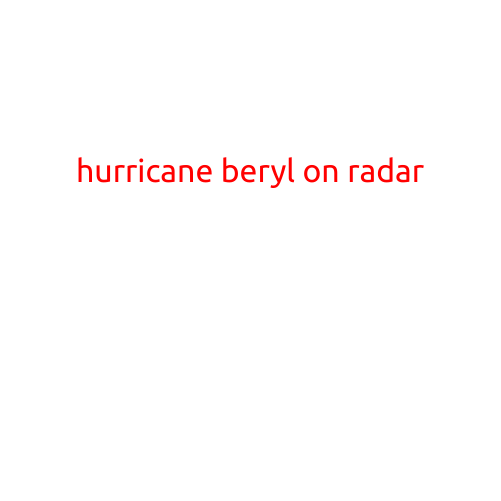
Hurricane Beryl Origin: Unraveling the Mystery of the Storm’s Birth
Hurricane Beryl, the fourth named storm of the 2018 North Atlantic hurricane season, made landfall in North Carolina on July 8, 2018, causing significant damage and flooding along the East Coast of the United States. But have you ever wondered where this powerful storm originated from?
In this article, we’ll delve into the fascinating story of Hurricane Beryl’s origin, exploring the conditions that led to its formation and the journey it took to reach its destructive peak.
The Perfect Brew
To understand the origin of Hurricane Beryl, we need to take a step back and analyze the atmospheric conditions that existed in the weeks leading up to its formation. The Cape Verde season, which typically runs from July to September, is a period of high hurricane activity in the North Atlantic. During this time, a combination of factors, including warm ocean temperatures, low atmospheric pressure, and moist air from the African continent, creates the perfect environment for storms to develop.
In June 2018, the African easterly jet, a fast-moving band of air that originates over Africa, began to shift northward, bringing a surge of moisture and instability across the Atlantic. This belt of air is responsible for fueling many Atlantic hurricanes, as it provides the necessary lift for convection to occur.
Birth of the Storm
On June 19, 2018, a tropical wave, a cluster of clouds and thunderstorms, emerged off the coast of West Africa. This wave was part of a larger system of waves that had been moving westward across the Atlantic, fueled by the African easterly jet.
As the wave moved into the warm waters of the tropical Atlantic, it began to interact with the atmosphere, creating an area of low pressure. Moist air from the surrounding atmosphere condensed, forming clouds and releasing heat, which in turn fueled the system. This process, known as convection, continued to intensify the low pressure area.
Early Structure and Strengthening
On June 21, the National Hurricane Center (NHC) began monitoring the system, designating it as Potential Tropical Cyclone One. By this time, the system had developed a well-defined center of circulation, with maximum sustained winds of around 30 mph (48 km/h).
Over the next few days, the system continued to strengthen, fueled by the warm ocean and low atmospheric pressure. On June 24, the NHC upgraded the system to Tropical Storm Beryl, with maximum sustained winds of around 50 mph (80 km/h).
The Final Stretch
In the final stages of its journey, Hurricane Beryl continued to intensify, fueled by the warm waters of the North Atlantic. By July 6, the storm had reached its peak intensity, with maximum sustained winds of around 75 mph (120 km/h).
As the storm approached the East Coast of the United States, it began to interact with the cooler waters of the ocean and the stronger winds of the mid-level jet stream. These factors led to a gradual weakening of the storm, but not before it made landfall in North Carolina on July 8.
Conclusion
In conclusion, the origin of Hurricane Beryl is a fascinating story of atmospheric and oceanic interactions. From its birth as a tropical wave off the coast of West Africa to its eventual landfall in North Carolina, Hurricane Beryl was fueled by the perfect combination of factors, including warm ocean temperatures, low atmospheric pressure, and moist air from the African continent.
This article aims to provide a concise and informative overview of the conditions that led to Hurricane Beryl’s formation and the journey it took to reach its destructive peak.




